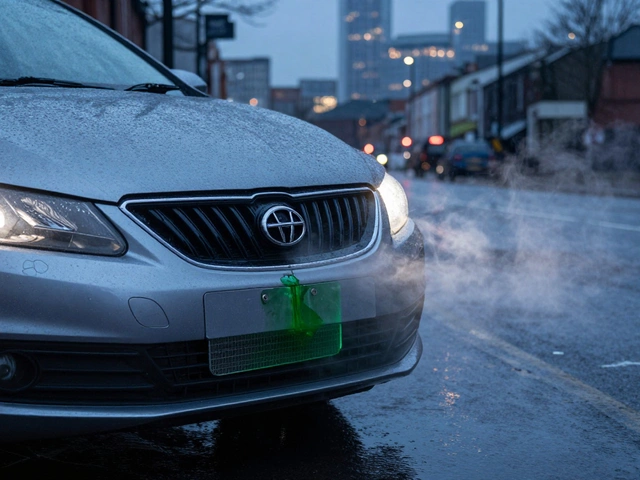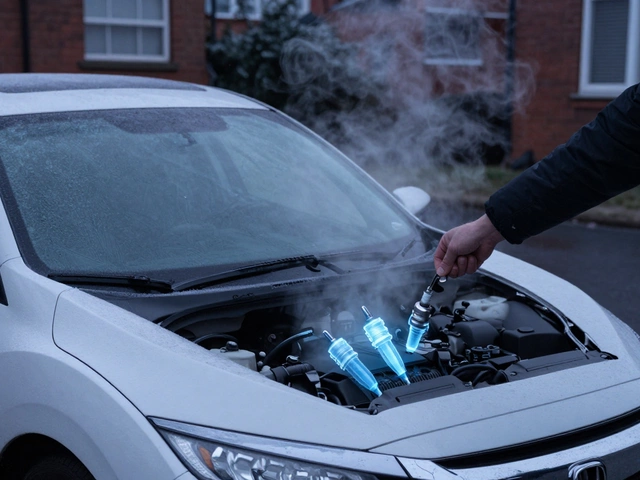Ever noticed your wipers making weird noises, streaking water, or totally missing half your windscreen? Yeah, me too, and it always happens right before a big downpour. But before you can fix it, there’s one tiny yet weirdly frustrating step—figuring out what size windscreen wipers your car actually uses. It’s not as obvious as it should be, with every model and sometimes even different trim levels having their own, very specific numbers. Trust me, guessing at the parts store leads to nothing but disappointment when you finally get home and realize you’ve bought blades that could wipe a bus, not your hatchback. Why’s it matter? The right fit makes all the difference to your visibility and safety.
Why wiper size really matters
Small thing, big deal. When it comes to windscreen wipers, it’s basically a Goldilocks situation—not too big, not too small. Too small, and you leave dirty arcs right in your line of sight. Too big, and the blade either hangs off the edge or skips over curves in your glass. The result? You’re left scrambling at every rainstorm, wondering why you can’t see anything. With more than 1,500 car models in the UK alone and over 2,000 in the US, automakers don’t make this easy. A 2018 Ford Focus? That’s a 28-inch blade on the driver’s side, but a 23-inch on the passenger. Neighbor’s Honda Civic? Those numbers flip. Some fancy cars even stagger sizes, like Mercedes’ 30/27 inches or the Toyota Prius’s mix-and-match approach.
But it’s not just fit. The ideal wiper size maximizes your field of clear vision–important when 90% of driving decisions depend on what you see. Plus, poorly fitting blades put strain on the wiper motor, wear out faster, and can scratch your windscreen. That’s not just annoying—it gets expensive real fast. A cracked windscreen sets most drivers back £200-£300 to fix in the UK, and can double or triple that in the US if you drive something less common.
Car makers design the sweep area of your wipers to match the curve and size of your glass. Stray from their specs, and you introduce brand-new blind spots, and as anyone who’s squinted through a surprise storm knows, blind spots multiply the risk of accidents. According to the AA, poor visibility from faulty wiper blades is a leading cause of insurance claims during wet months. So if you’ve been ignoring that screeching wiper for months, now’s a good time to pay attention—it could save your wallet and your neck.
How to find your exact wiper size—fast and easy
This part should be dead simple, but between out-of-date websites, faded owner’s manuals, and cryptic auto parts aisles, finding your correct size feels harder than it should be. Luckily, I’ve been through this rodeo more times than I care to admit (Max hates the rain, so I’m always swapping blades to stay dry). Here are three easy ways to figure it out—and yes, one involves an ordinary tape measure.
- Check your car’s owner’s manual: Almost every manual lists the right wiper size for front and rear blades. Look under ‘Wipers’ or ‘Routine Maintenance.’ Lost the manual? No worries—it’s usually easy to find an online PDF version by searching your car model and year.
- Look up your car online: Use trusted wiper manufacturers’ websites. Bosch, Valeo, or Rain-X let you enter your car’s make, model, and year, then spit out the exact sizes (in inches and mm). Quick tip: double check the info matches your actual model year, since automakers tweak sizes every now and then.
- Measure your current blades: If your blades aren’t falling apart, take a tape measure and check from one end to the other—inches or centimeters, doesn’t matter, as long as you match the replacement. Measure both front blades—they might be different lengths. Write those numbers down or snap a quick pic with your phone.
Heads up—rear wipers (on hatchbacks, vans, SUVs) often need different, much shorter blades, so don’t use your front measurements back there. And if you’re in doubt, literally bring the old blades to the parts shop. I’ve done it, and unless you’re showing up with greasy hands and four different dogs, nobody will judge you.

Tips for buying and replacing your wiper blades
So you’ve got the numbers, but what now? All wipers are not created equal—some are budget versions that work well for a few months, others have fancy silicone coatings or aerodynamic frames that can last a lot longer. Shop smart by looking at reviews and considering your local weather. If you’re somewhere rainy, like Manchester or Seattle, it’s worth paying for a bit more durability.
Let’s talk installation. If you’re nervous about swapping wipers, relax—it’s almost as easy as replacing batteries in the TV remote. Most blades these days use a universal connector, but always check the packaging. Here’s a simple step-by-step:
- Lift the wiper arm away from the windscreen gently. It should stick up and stay in place.
- Find the release tab—usually underneath the wiper or on the side. Press it, slide the old blade off. (Lay a towel on your windscreen so the bare metal arm doesn’t whack your glass.)
- Slide the new blade onto the arm until you hear it click. Don’t force it. If it feels stuck, check you’ve got the connector the right way around.
- Lower the arm carefully back to the windscreen.
- Repeat on the other side. Done!
If you’re not sure you did it right, lots of parts stores will actually do this for you for free if you buy your wipers there—worth asking. And don’t forget: replace wipers every 6-12 months, or sooner if you spot chattering, streaks, or bad cleaning. Storing your car under cover and cleaning the blades can stretch their life. Rubbing alcohol or a bit of glass cleaner and a rag can keep rubber fresh.
Here’s a quick comparison table of popular UK car wiper sizes so you see how much things can vary—even for similar vehicles:
| Car Model | Driver Side | Passenger Side | Rear |
|---|---|---|---|
| Ford Fiesta (2013) | 26" | 16" | 12" |
| Vauxhall Astra (2017) | 26" | 16" | 10" |
| VW Golf Mk7 | 24" | 19" | 13" |
| BMW 3 Series (2019) | 26" | 18" | 12" |
| Toyota Yaris (2020) | 26" | 15" | 10" |
Pay attention to the numbers—the variation is pretty wild.
FAQs and facts: windscreen wiper size myths busted
Now for the stuff you might hear at every car meet or online forum, but that doesn’t quite match reality. First up—can you use blades that are one inch off from the manufacturer size? In a pinch, maybe. But you might lose vision on the edge, or worse, the blade could hit the edge of your windscreen or even tangle with the other blade if it’s an inch too long. It’s worth getting the specs right.
Random fact: Over 80 million wiper blades are sold worldwide every year. They’re easily one of the cheapest safety upgrades you can make for your car—much less than a parking ticket or a new windscreen. And wiper design matters—aerodynamic “beam” blades keep contact with the glass even at motorway speeds.
Here are a few things people get wrong about wiper sizes:
- "Universal Fit" isn’t always universal. If you drive an older car or have an unusual wiper arm, make sure the new blade comes with the adapters you need.
- Don’t ignore winter blades. If you're somewhere that gets snow, consider winter-specific blades. Regular ones freeze and crack way faster in frosty weather.
- Mixing brands? It won’t hurt. You can run a Bosch on one side and a Valeo on the other. Just match the size and they’ll play nice together.
- Can you cut down a blade? Nope—don’t even try. The rubber is precision molded and the metal or plastic structure won’t work if you start chopping bits off.
- Rear wipers don’t last as long. They get forgotten, but they fail quicker due to harsh sun and grime on vertical glass. Don’t neglect them.
I used to be the guy who’d just wipe the dirt off old blades and hope for the best. Then Max (my dog) got stuck in the mud during a surprise storm, and I realized seeing through the torrent really is life or death sometimes, not just for me but for everyone on the road. Don’t cut corners with your wipers—even if it’s one of those jobs nobody really wants to do. Grab the right size, fit them on, and you’ll be surprised how much difference a clear windscreen makes, the next time skies open up.





